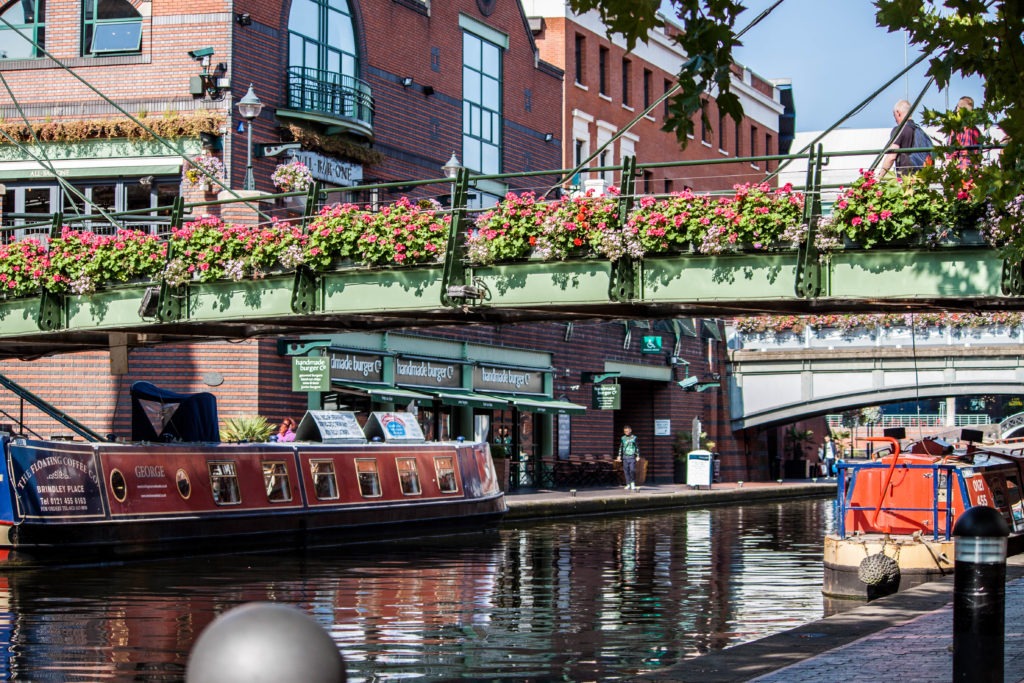Building a strong UK economy and more mobile workforce post-COVID-19 provides a once-in-a-lifetime opportunity to re-imagine how we use urban and semi-urban spaces to benefit the environment, communities, businesses, and society as a whole. At the heart of this debate lies the Government’s plans for a Green Industrial Revolution as part of its ‘Build Back Better’ strategy which aims to make our nation cleaner, greener and more beautiful.
Richard Parry, chief executive from Canal & River Trust, a registered charity which cares for 2,000 miles of canals and navigable rivers in England and Wales, explores how we might look to re-invent the infrastructure and space along our network of waterways. By leveraging its 200-year-old network to contribute to the UK’s renewable energy targets, Richard explains how the Trust is innovating to ensure our waterways can play their part in a green recovery.
Britain’s urban canals, and their towpaths, offer huge opportunities to help local councils and their communities on the challenging journey towards achieving the Government’s ‘net-zero’ carbon targets by 2050.
Originally constructed over 200 years ago to serve the transport needs of the Industrial Revolution, our inland waterway network, spanning 2,000 miles, is one of the finest examples of living, working industrial heritage in the world. With its extensive ‘Blue/Green’ corridors, it’s ideally placed in our towns and cities to be at the forefront of the new Green Industrial Revolution.
More than 8.5 million people (roughly 15% of the population of England) live within 1km of one of our waterways. In many of the country’s larger urban areas, the percentage is often much higher. Due to their previous industrial use, many urban waterways run through heavily populated areas in former industrial towns and pass close to city centres. More than half of the population of the West Midlands, for example, is within 10 minutes’ walk from their nearest canal.
The coronavirus pandemic and national lockdowns have sparked a suburban resurgence. Towpath usage in many urban residential areas across England increased significantly (doubled or even trebled in places like Burnley, Blackburn, Sandwell and Walsall, and in East London) as people went in search of local green spaces to be closer to nature as part of their daily exercise routines and to support their mental health.
With the right investment, our waterways and towpaths offer a fantastic sustainable transport network and an important ‘natural health service’ across much of the country. The Trust has worked with many councils and other urban developers in recent years to transform muddy towpaths into all-weather surfaces, providing accessible and easy to use off-road routes for walking and cycling for both commuting and recreation, promoting active travel to support sustainable developments. But there is significant scope to do more.
The network of canals and river navigations, constructed for moving goods 200 years ago, and now lying in the heart of our towns and cities, is constantly evolving and adapting as society’s needs change. We are here to work in partnership with councils, developers, businesses and local communities to provide ‘net zero’ solutions, climate change mitigation and, ultimately, more smart cities.
Water-sourced heat pumps, situated in urban canals alongside commercial or residential properties, have the potential to provide both heating and cooling, to reduce the large quantities of harmful CO2 entering the atmosphere, compared to the use of more traditional energy sources.
This new technology is already helping to heat and cool buildings at a number of large commercial sites and more than a quarter of a million waterside homes could benefit from this ‘green’ technology, saving well over one million tonnes of CO2 annually. New homes, offices, hotels, data centres, and other developments in appropriate waterside locations could all benefit from this new technology too, reducing greenhouse gas emissions and supporting the journey towards achieving the Government’s ‘net-zero’ carbon targets by 2050.
With average temperatures across the UK increasing, research recently completed by the University of Manchester has shown that urban canals can help reduce summer daytime air temperatures in the 100m wide corridor around them by up to 1.5oC. Placement of buildings next to the water yields the full micro-climate benefit, making detailed planning of new developments essential to provide cooler conditions for those living and working along our waterways.
It’s clear that our 200-year-old network of waterways has a role to play in improving wellbeing, inclusion and the prospects of communities and individuals, not to mention contributing to a green recovery. The pandemic has not only fast-tracked suburban resurgence, but also the journey towards creating more sustainable, connected and smart cities across the UK.
The Trust is developing waterside design guidance to help local authorities and developers to take full advantage of everything that urban waterways have to offer.
The opportunity to re-imagine how we use waterways within our urban and semi-urban spaces to benefit the environment, our communities, businesses and society as a whole, has never been greater, and now is the time to act.
Take a look at our article discussing what the future of urban green space will look like and how we can make it accessible for all.
Re-inventing the infrastructure and space along our network of waterways is just one of the ways we can achieve a utopian suburbia. Take a sneak peek at the future of suburban life in our Future Suburbia infographic.

